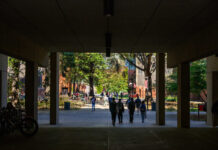While smoking is by far the biggest risk factor, causing 80 to 85 percent of lung cancer in the United States, other risk factors for lung cancer include:
- Exposure to radon and asbestos
- Regular exposure to secondhand smoke
- Military service (due to smoke, asbestos, fuel exhaust and other battlefield emissions)
- Age
- Environmental exposure to industrial chemicals
- Use of beta-carotene supplements
- Health-related issues
- Family history
The American Cancer Society estimates 3,000 nonsmokers die each year from secondhand smoke. It is estimated that the rate of lung cancer among veterans may be twice that of the general population.
Screening for cancer increases the chance of being diagnosed at early stages, which allows for more successful treatment.
Early stages of lung cancer may not show any symptoms; however, symptoms may include: chest pain, cough that doesn’t go away, coughing up blood, fatigue, losing weight without trying, loss of appetite, shortness of breath and wheezing.
Rodrigo Cavallazzi, a UofL Physicians pulmonologist, leads a new lung cancer screening using a Computed Tomography Scanner (CT) which takes many pictures of the same area from many angles and then places them together to produce a 3-D image.
Smokers should be screened for lung cancer if they fit one of the following.
- Current and former smokers who quit within the last 15 years with a 30 pack year history (number of packs smoked per day times the number of years smoking) who are between the ages of 55 and 74.
- Current and former smokers ages 50 and up with a 20 pack year history and one of the following additional risk factors:
- Exposure to radon or occupational carcinogens (asbestos, diesel fumes, etc.)
- A previous cancer
- A family history of lung cancer
- COPD or pulmonary fibrosis
To find out more about the CT lung screen, make an appointment or refer a patient, contact UofL Physicians – Pulmonary/Critical Care Medicine at the James Graham Brown Cancer Center at 502-562-HOPE (4673).
Editor’s Note: UofL Today reprints To Your Health articles from the “UofL Physicians-Insider” newsletter. Read the entire November issue (opens as a PDF document).


























